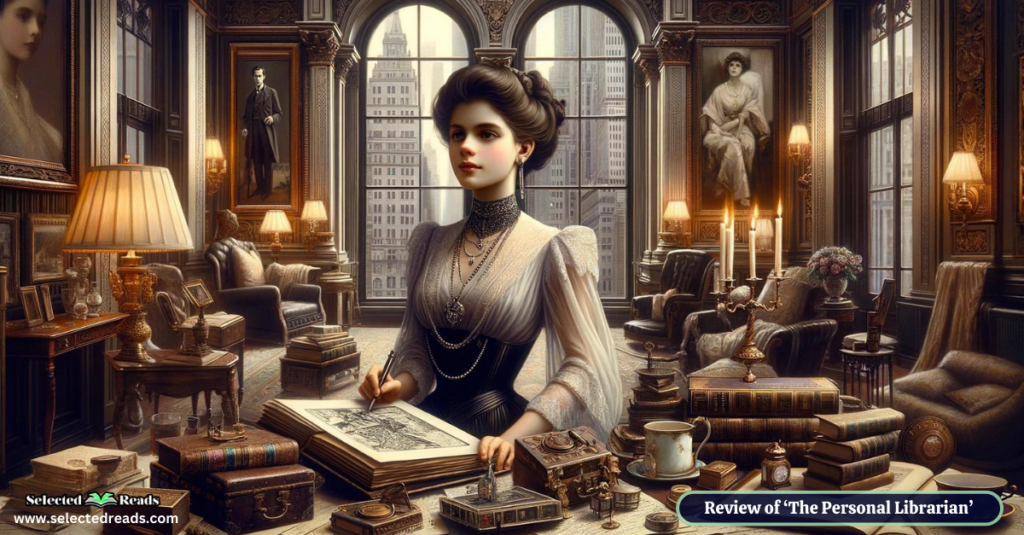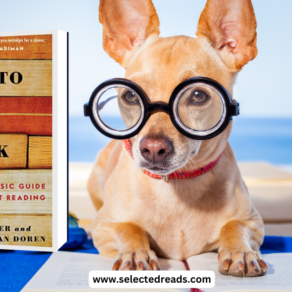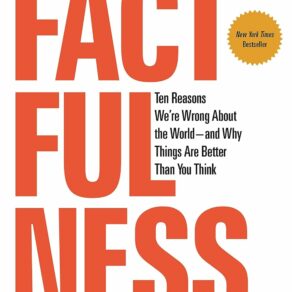Today’s analytical focus is on “The Personal Librarian” by Marie Benedict and Victoria Christopher Murray, a compelling dive into the world of historical fiction. This novel recounts the tale of Belle da Costa Greene, an extraordinary woman navigating the complexities of identity and ambition in early 20th-century America. Our aim here is to give you a glimpse into the captivating narrative and rich character tapestry of “The Personal Librarian,” all the while keeping the core of its mystery intact for your reading pleasure.
Our journey through this post will unfold in a structured manner: starting with an overview of the story to set the stage, followed by an introduction to the key players who bring depth and color to this tale. Finally, we’ll explore several thought-provoking questions designed to enrich your discussion.
The Personal Librarian Summary
“The Personal Librarian” is a compelling historical novel that brings to life the story of Belle da Costa Greene, an influential figure in the early 20th century who served as the personal librarian for the wealthy financier J.P. Morgan. The narrative is set against the backdrop of New York City’s elite society and the richly detailed world of rare manuscripts, books, and artwork.
Belle da Costa Greene is in her twenties when she is chosen by J.P. Morgan to oversee his prestigious collection of rare artifacts for the Pierpont Morgan Library. This role catapults her into the upper echelons of society, where she becomes renowned for her unmatched taste and her skill in negotiating acquisitions that would elevate Morgan’s library to one of the most important in the country.
Photo: Amazon
Despite her success, Belle harbors a deep-seated secret that, if revealed, could destroy her career and social standing. She was born Belle Marion Greener, the daughter of Richard Greener, the first African American graduate of Harvard and an ardent advocate for racial equality. The story vividly captures Belle’s internal struggle as she navigates a society steeped in racial prejudice, choosing to pass as white by attributing her complexion to Portuguese heritage, rather than revealing her true African American identity.
Throughout the novel, readers follow Belle as she meticulously constructs and maintains her white persona, a facade that demands constant vigilance and personal sacrifice. This decision is not made lightly, as Belle is acutely aware of the societal and personal consequences should her true heritage come to light. Her journey is marked by moments of tension, triumph, and tragedy, as she forges relationships, builds a legacy, and confronts the complexities of identity and race.
Related: A Tale of Two Cities Summary and Characters
Characters
Here is a quick overview of the characters in “The Personal Librarian”:
- Belle da Costa Greene (Belle Marion Greener): The protagonist of the novel, she is J.P. Morgan’s personal librarian, who is forced to hide her true African American heritage and pass as white to maintain her position in society and her career.
- J.P. Morgan: A wealthy financier and art collector who hires Belle to curate his collection of rare manuscripts, books, and artwork for the Pierpont Morgan Library.
- Richard Greener: Belle’s father, the first African American graduate of Harvard and a known advocate for racial equality. His legacy is a significant part of Belle’s hidden identity.
- The Greener Family: Belle’s family, who have their own complexities and struggles with identity, heritage, and the decisions Belle makes to protect her secret and their future.
- New York City Society Members: Various figures from the elite circles of New York City, with whom Belle interacts and becomes a prominent figure through her work and social maneuvering.
- Art and Book World Figures: Collectors, artists, dealers, and other notable individuals in the art and rare book communities, who Belle engages with in her role as Morgan’s librarian and negotiator.
Discussion Questions
Here are some thought-provoking questions that can be used to spark conversations in book clubs, classrooms, or among readers interested in exploring the complexities of Belle da Costa Greene’s life and the era she lived in:
- Identity and Passing: How does Belle da Costa Greene’s decision to pass as white affect her personal and professional life? What do you think motivated her choices, and how do they reflect the societal pressures of her time?
- The Role of Women in Early 20th Century: How does the novel portray the challenges and opportunities for women, especially women of color, during the early 20th century? How does Belle navigate these challenges differently from other women in the book?
- Race and Society: In what ways does the novel explore the concept of race and the social constructs surrounding it? How do the characters in the book confront or conform to the racial prejudices of the era?
- The Art of Secrecy: Belle is tasked with acquiring rare manuscripts and art for J.P. Morgan’s collection, often using secretive and strategic methods. How does this aspect of her professional life mirror the secrets she keeps in her personal life?
- Historical Accuracy vs. Fictional Liberties: The authors blend historical facts with fictional elements to tell Belle’s story. Discuss instances where you felt this blend was particularly effective or where you wished for more historical accuracy.
- Family and Sacrifice: Belle’s relationship with her family is complex and often strained due to her secret life. Discuss how her decisions impact her family dynamics and the theme of sacrifice throughout the novel.
- Belle’s Legacy: Considering Belle da Costa Greene’s contributions to the art and literary world through her work with J.P. Morgan, discuss how the novel portrays her legacy. Do you think her achievements outweigh the personal costs of her choices?
- Themes of Resilience and Ambition: How do Belle’s resilience and ambition drive her success but also create conflict in her life? Discuss examples from the book where Belle demonstrates these qualities.
- Comparisons to Contemporary Issues: How do the themes of race, identity, and societal expectations in “The Personal Librarian” relate to contemporary issues? Are there lessons to be learned from Belle’s story that apply to today’s society?
- The Influence of J.P. Morgan: How does J.P. Morgan’s character influence Belle’s life and decisions? Discuss the power dynamics in their relationship and how it impacts the development of the Pierpont Morgan Library.
Related: Number The Stars Book Summary
Final thoughts
In wrapping up, I trust this brief overview has sparked your interest in “The Personal Librarian.” This novel, steeped in the rich tapestry of early 20th-century America and the remarkable life of Belle da Costa Greene, offers a fascinating exploration of identity, secrecy, and ambition. If you’ve yet to immerse yourself in its pages, I wholeheartedly encourage you to do so.









